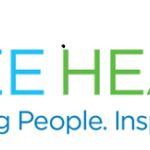 Most of the healthcare industry was astounded when President Obama signed legislation that delayed ICD-10 compliance by at least a year. Now that there’s been time to digest the new Oct. 1, 2015 deadline, healthcare providers may benefit by considering a more strategic approach for their transition to ICD-10.
Most of the healthcare industry was astounded when President Obama signed legislation that delayed ICD-10 compliance by at least a year. Now that there’s been time to digest the new Oct. 1, 2015 deadline, healthcare providers may benefit by considering a more strategic approach for their transition to ICD-10.The previous, quickly approaching October 1, 2014, deadline had many providers creating transition “patches.” Process improvements and documentation training were put into high gear – in many cases, lacking strategic planning. With the extension, providers can revisit their implementation approach and take advantage of other initiatives that directly impact their organization’s evolvement.
Here are six strategies to leverage the delay to be better positioned for post-transition success:
1. Increase clinical documentation and education.
Providers now have another year to ensure nurses, physicians, coders and even C-suite members understand the benefits for greater specificity in clinical documentation and how it applies to their role. Customized simulation training that addresses the specific educational needs of clinician groups can simplify the learning process and speed adoption. For example, such training allows caregivers to practice documenting care in ICD-10 through their actual EHR application, which is critically important for learning workflow and increasing system knowledge.
Time and money invested in such efforts will be financially beneficial in ICD-9 and provide a smoother transition to ICD-10 with reduced risks to reimbursement. Continuing to engage staff in training also maintains their interest throughout the delay.
2. Evaluate and improve the revenue cycle.
Providers now have time to improve charge capture and billing and claims processing. This will help identify potential lost revenue and charge issues before claim submissions, while improving compliance in anticipation of new denials and other post-transition challenges. Improved charge capture also creates a safety net, helping identify potential ICD-10 process issues.
3. Implement Computer Assisted Coding (CAC) systems.
Many hospitals have invested in CAC systems to aid coders in digesting physician documentation and which of ICD-10’s staggering, 141,000 possible codes is appropriate for diagnoses and procedures. Providers could benefit from supporting CAC implementation, focusing on coder workflow to optimize the benefits, and evaluating remote coding programs. Providers will need additional coders during the transition. Incorporating such tools reduces post-transition risk and assists in recruiting and retaining coders – professionals in significantly increasing demand.
4. Begin dual coding.
The sooner providers begin dual-coding, the more time physicians and coders have for practice. CAC systems can help the dual-coding process by providing an automated cross-walk back to ICD-9 codes for submissions to payers and other third parties. Increased accuracy and efficiency of documentation and coding helps mitigate compliance and reimbursement risks post transition.
5. Analyze the financial impact.
Providers can benefit from performing an in-depth financial impact analysis to determine codes with highest impact to reimbursement. Such analysis provides focus on operational remediation and training and assists in identifying reserves that may be necessary to get through post-compliance stabilization.
6. Expand the implementation plan.
Providers may also benefit from strategically linking ICD-10 transition with adoption plans for other initiatives, like Meaningful Use, Patient-Centered Medical Home and Accountable Care, to help ensure these different programs work together efficiently.
Miami Children’s Hospital, for example, is deploying a Revenue Cycle Management system while working toward ICD-10 compliance. Less immediate pressure to have physicians trained on ICD-10 allows training to occur after the new system modules are implemented to better reflect the hospital’s specific system and workflow. Simultaneous implementation of these programs saves time and money and strengthens the success of each.
The delay may tempt providers to pause their transition efforts, but continuing with a more strategic approach will position them for a more successful conversion to ICD-10.

























